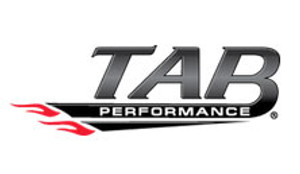Exhaust (1400)
Why You Need an Aftermarket Exhaust
A new aftermarket exhaust isn’t just about sound, it’s about unleashing real power and owning your ride. You’ll instantly feel better responsiveness, optimized power, and a deeper sound that resonates with your style.
Choosing motorcycle exhaust systems from the top aftermarket brands ensures you’re supported by advanced engineering designed for both track and street performance. You get motorcycle exhausts that fit perfectly, durable materials, and bold designs that endure mile after mile.
With guaranteed fitment and heavy-duty build quality, you can sidestep the hassles of returns. Shipping is free for orders over $99, so you can focus on conquering the road instead of transaction details.
Must-Have Aftermarket Exhaust Components
Ready to bolt on attitude? Check out these essential pieces that transform your ride.
Before you dive in, remember: Each part is designed to boost performance, tone, and that unmistakable rumble you crave.
- Slip-On Mufflers: Drop in for instant sound and weight reduction without gutting your stock system; perfect for riders who want a quick upgrade.
- Full Exhaust Systems: Replace factory headers, mid-pipes, and mufflers for max power gains, throttle snap, and a deep, relentless roar.
- Headers/Down-Pipes: Improve exhaust flow right at the cylinder exit, reducing backpressure and unlocking torque across the rev range.
- Mid-Pipes/Link Pipes: Bridge gaps between header and muffler; fine-tune tone and power delivery while trimming excess weight.
- Exhaust Wrap/Thermal Shields: Keep heat off your legs and improve exhaust scavenging for stronger performance on every twist of the throttle.
How to Find the Ideal Motorcycle Exhaust Pipes For You
Choosing the perfect exhaust starts with aligning your vision to the right setup. Start by determining whether you want your motorcycle exhausts to create a deep, resonant rumble or a high-revving sound. Then, check the fitment. Your bike’s details, like make, model, year, and engine specs, all matter.
Pick the right materials. Stainless steel fights off rust, while titanium reduces weight. Determine whether you’ll do the installation yourself or get help from a professional. Some aftermarket motorcycle exhaust systems bolt right on, while others need a bit of fabrication.
Also, investigate local noise regulations to steer clear of any fines. Compare features, study the specs, and you’ll find the ultimate balance of power, looks, and durability.
FAQs
What makes an aftermarket motorcycle exhaust different from stock?
Aftermarket exhausts get rid of the flow-obstructing pipes and motorcycle mufflers that limit the exhaust’s flow. This leads to more efficient exhaust removal, resulting in quicker acceleration, increased power, and a more aggressive sound.
What’s more is that you have the option to select from various materials and styles, like titanium for lighter weight or steel for durability, giving you the ability to customize appearance and performance.
Will installing a new exhaust void my warranty?
Replacing your motorcycle exhaust pipes doesn’t usually void your warranty. However, the manufacturer might refuse to cover repairs on any part affected by the new system. Always check your original equipment warranty. Using motorcycle exhausts designed for exact fitment and easy installation reduces potential problems and helps maintain your coverage.
What is too loud for public roads?
Depending on where you are, noise regulations can vary, but a good benchmark is to stay within the 95-100 dB range when the throttle is about three-quarters open. Anything louder can lead to penalties. Consider motorcycle mufflers with removable sound-dampening parts or compliant inserts that enable you to lower the volume when needed.
Is a performance tuner needed after an exhaust upgrade?
With slip-on exhausts, you may need a tuner. But with full aftermarket motorcycle exhaust systems, tuning is usually essential. Proper tuning ensures your engine runs at the correct air-fuel ratio, prevents lean misfires, and helps your bike perform at its best. Consider it the last step to fully realize the power gains your new system will provide.
How much weight will I take off with an upgrade?
Different motorcycle exhausts provide varying reductions in weight. A simple slip-on replacement may reduce the weight by about 5-10 pounds, while complete titanium systems can cut 15-25 pounds. Less weight allows for easier handling, faster pickup, and a better feel from the bike.
Can I install aftermarket motorcycle exhaust pipes myself?
If you have standard tools and the repair guide, installing slip-on motorcycle mufflers and mid-pipes is usually straightforward. However, you might need custom adjustments, welding, or changes to the mounting brackets for exhaust headers and complete motorcycle exhausts.
If you have any doubts, it’s always best to have a professional handle it. A proper installation ensures your bike operates smoothly and prevents issues like leaks or alignment problems from occurring.
How do I keep my aftermarket exhaust well-maintained?
Check mounting components occasionally because vibrations can cause bolts to come loose. Clean any covered areas to prevent corrosion from heat, and check the welds for any breaks after long rides. If your exhaust headers are wrapped, re-wrap them every year to ensure proper insulation and performance.
How do I choose between stainless steel and titanium?
Motorcycle exhausts that are made with stainless steel tend to be durable, rust-resistant, and more affordable, but they weigh more. Titanium is more expensive but significantly reduces weight and produces a sharper sound.
If your priorities are getting better track times or making modifications, titanium is probably the best choice. Just be ready for a higher price compared to steel alternatives.
Can an aftermarket exhaust improve my bike’s fuel efficiency?
You could experience minor gains in fuel efficiency because aftermarket motorcycle exhaust pipes flow more freely. The majority of riders notice better acceleration and power delivery rather than significant improvements in fuel efficiency.
Optimizing the fuel settings to run leaner can help. But keep in mind: once you have that aggressive sound and extra power, you’ll probably accelerate more often.























